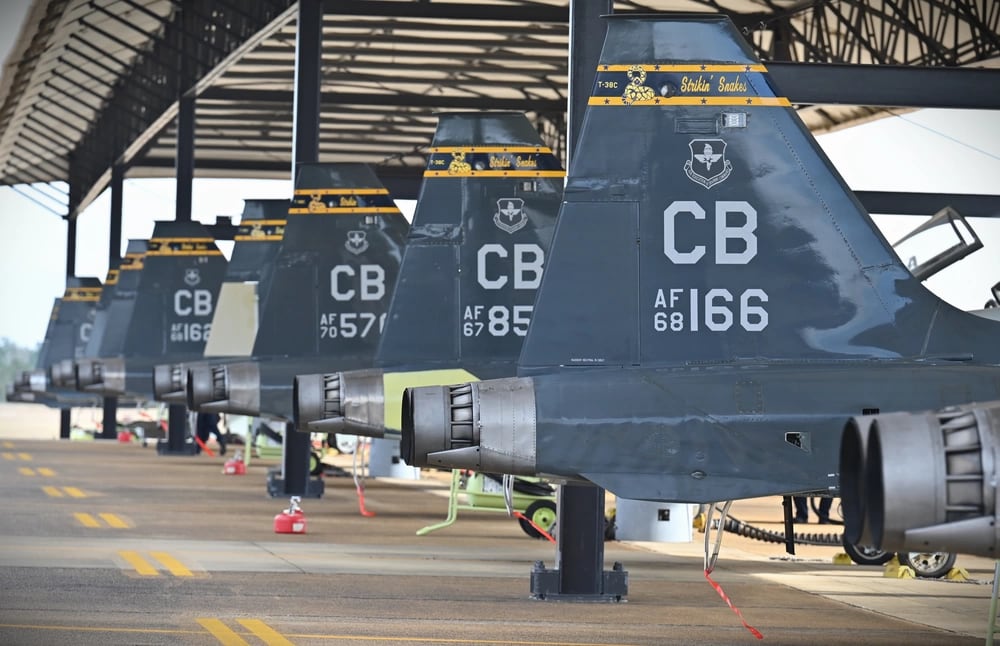A T-38C Talon training jet crashed in eastern Mississippi last November after a bird collided with its windshield — shattering the canopy, breaking its engines and prompting the lone pilot to eject, an Air Force investigation has concluded.
The pilot, an instructor with the 49th Fighter Training Squadron at Mississippi’s Columbus Air Force Base, sustained minor injuries but safely escaped the hobbled aircraft. The jet, valued at $8.5 million, was destroyed.
It was an “unavoidable” incident that the experienced airman handled well, Col. Michael Driscoll, who led the investigation into the accident, said in a final report published July 18.
The run-in occurred during a routine training flight on Nov. 7, 2022, as the pilot set out to brush up on his tactical skills alongside another T-38.
The “large” bird slammed into the pilot’s cockpit as he moved into formation behind his wingman, a few minutes after the pair took off from Columbus that afternoon, the report said.
“Pieces of the shattered canopy were ingested into both engines,” Driscoll wrote in the report. “The left engine immediately failed, and shortly after stopped spinning or working altogether.”
The right engine turbine could still turn but lacked enough thrust to keep the jet stable and aloft.
Unable to control the plane’s flight path, the pilot ejected and landed in a tree. The jet crashed 22 miles south of the base.
“Post-mishap engine analysis confirmed that the left engine experienced extensive damage,” the report said. “All of the stage 2 blades were sheared at the blade root. … The amount of shrapnel, composed of compressor hardware, was the cause for the left engine seizure during flight.
“Smaller pieces of the canopy and/or pieces of the bird entered the right engine … which caused the compressor stall.”
Bird strikes typically cause several dozen aircraft mishaps each year, according to the Air Force Safety Center, though most don’t lead to heavy damage or death.
Columbus was following regular bird strike prevention and awareness protocols at the time of the mishap, and the pilot knew the risk that birds posed to his jet, the report said.
The Air Force’s fleet of around 500 supersonic T-38s are primarily used to prepare airmen to fly fighter and bomber planes. The service typically loses at least one in a major accident each year, according to Safety Center data.
“Air Education and Training Command officials take every measure to ensure the safety of aircrews, while delivering superior flight training for the Air Force,” the command said in a release. “AETC is committed to using the lessons learned from this investigation to prevent similar mishaps from happening again.”
Rachel Cohen is the editor of Air Force Times. She joined the publication as its senior reporter in March 2021. Her work has appeared in the Washington Post, the Frederick News-Post (Md.), Air and Space Forces Magazine, Inside Defense, Inside Health Policy and elsewhere.





